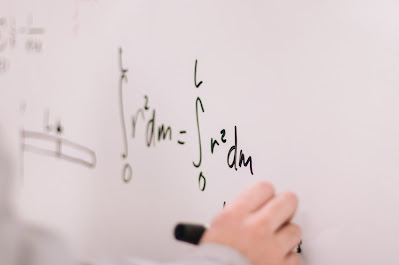MOTOR
Electric machine (Electric
Machine) is a general term for a conversion device between mechanical energy
and electrical energy. The conversion is bidirectional, and the principle of
electromagnetic induction is mostly applied. A motor that converts mechanical
energy into electrical energy is usually called a "generator"; a
motor that converts electrical energy into mechanical energy is called a
"motor". Other new types of motors have emerged, such as ultrasonic
motors (using the piezoelectric effect), without the principle of
electromagnetic induction. However, stationary motors refer to transformers.
DC
The working principle of the DC
generator is to convert the alternating electromotive force induced in the
armature coil, the principle that the commutator cooperates with the
commutation function of the brush to make it become a DC electromotive force
when it is drawn from the brush end.
The direction of the induced
electromotive force is determined according to the rule of the right hand (the
magnetic induction line points to the palm of the hand, the thumb points to the
direction of the conductor movement, and the other four fingers point to the
direction of the induced electromotive force in the conductor.
WORKING PRINCIPLE
The direction of the conductor
force is determined by the left-hand rule. This pair of electromagnetic force
forms moment acting on the armature. This moment is called electromagnetic
torque in the rotating electrical machine. The direction of the torque is counterclockwise,
which attempts to rotate the armature counterclockwise. If this electromagnetic
torque can overcome the resistance torque on the armature (such as resistance
torque caused by friction and other load torque), the armature can rotate in a
counterclockwise direction.
DC motors are motors that operate
on DC operating voltage and are widely used in recorders, VCRs, DVD players,
electric shavers, hair dryers, electronic watches, toys, etc.
ELECTROMAGNETIC
Electromagnetic DC motor is
composed of stator poles, rotor (armature), commutator (commonly known as
commutator), brushes, casing, bearings, etc.
The stator pole (main pole) of an
electromagnetic DC motor is composed of an iron core and an excitation winding.
According to the different ways of excitation (the old standard is called
excitation), it can be divided into series excitation DC motor, parallel
excitation DC motor, other excitation DC motor and compound excitation DC
motor. Due to the different excitation methods, the law of the stator pole
magnetic flux (generated after the stator pole excitation coil is energized) is
also different.
The field winding and the rotor
winding of the series-excited DC motor are connected in series through the
brush and the commutator. The excitation current is proportional to the
armature current. The magnetic flux of the stator increases with the increase
of the excitation current. The torque is approximately The Square of the
armature current is proportional to the speed, and the speed drops rapidly with
the increase of torque or current. The starting torque can be more than 5 times
the rated torque, the short-term overload torque can be more than 4 times the
rated torque, the speed change rate is large, and the no-load speed is very
high (generally it is not allowed to run under no-load). Speed regulation can be achieved by using external
resistors in series (or parallel) with the series winding or by connecting the
series winding in parallel.
The excitation winding of the
parallel-excited DC motor is connected in parallel with the rotor winding, the
excitation current is relatively constant, the starting torque is proportional
to the armature current, and the starting current is about 2.5 times the rated
current. The speed decreases slightly with the increase of current and torque,
and the short-term overload torque is 1.5 times the rated torque. The speed
change rate is relatively small, 5%~15%. The speed can be adjusted by the
constant power that weakens the magnetic field.
The excitation winding of the separately
excited DC motor is connected to an independent excitation power supply, the
excitation current is also relatively constant, and the starting torque is
proportional to the armature current. The speed change is also 5%~15%. The
speed can be increased by weakening the magnetic field constant power or by
reducing the voltage of the rotor winding.
In addition to the parallel
excitation winding, the stator pole of the compound excitation DC motor is also
equipped with a series excitation winding (which has fewer turns) connected in
series with the rotor winding.
The direction of the magnetic
flux generated by the series winding is the same as the direction of the
magnetic flux of the main winding, the starting torque is about 4 times the
rated torque, and the short-term overload torque is about 3.5 times the rated
torque. The speed change rate is 25%~30% (related to the series winding). The
speed can be adjusted by weakening the magnetic field strength.
The commutator segments of the
commutator use silver-copper, cadmium-copper and other alloy materials and are
molded with high-strength plastic. The brush is in sliding contact with the
commutator and provides armature current for the rotor winding. Electromagnetic
DC motor brushes generally use metal graphite brushes or electrochemical
graphite brushes.
The iron core of the rotor is
formed by laminating silicon steel sheets. It is generally 12 slots, and 12
sets of armature windings are embedded. After the windings are connected in
series, they are respectively connected with 12 commutating sheets.
DC
The excitation method of the DC
motor refers to the problem of how to supply power to the excitation winding
and generate the excitation magnetomotive force to establish the main magnetic
field. According to the different excitation methods, DC motors can be divided
into the following types.
HELI
The excitation winding has no
connection with the armature winding, and the DC motor powered by the other DC
power supply to the excitation winding is called a separately excited DC motor.
For More Information
Please Subscribe My Youtube Channel
https://www.youtube.com/channel/UCn0iC-SAjNWh4_P8PqeUlyg?view_as=subscriber
My INSTAGRAM
https://www.instagram.com/asimali1101/
My Facebook Page
https://www.facebook.com/All-Worlds-Information-1504088989819688/
My Twitter
https://twitter.com/RAJAASIMALI
Inspedium Unlimited Web Hosting
https://www.inspedium.com/web-hosting/













Comments
Post a Comment